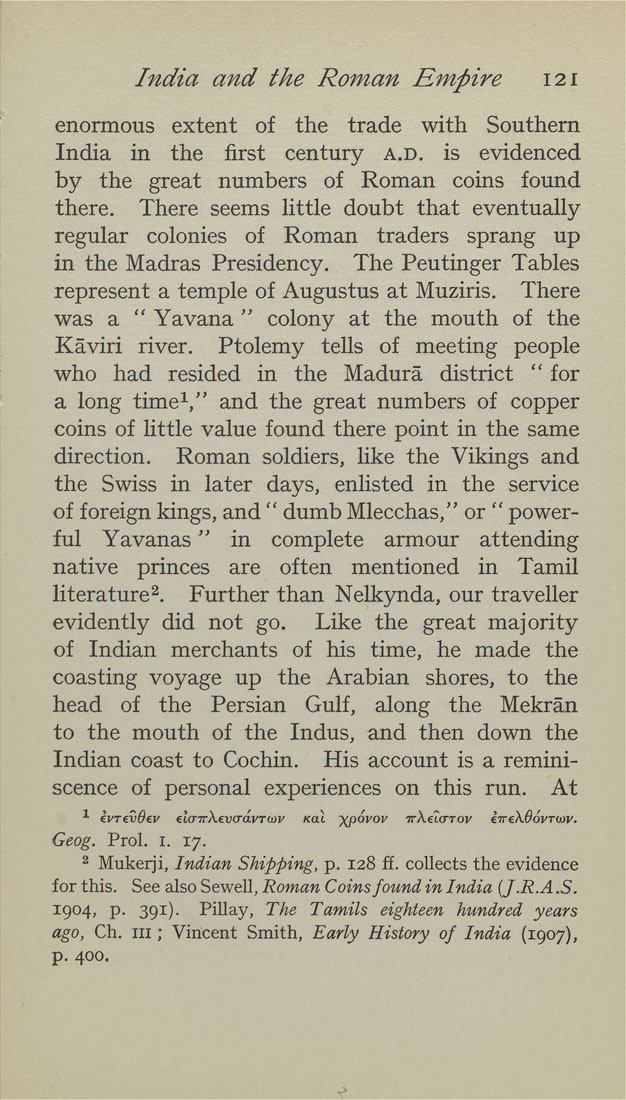India and the Roman Empire 121
enormous extent of the trade with Southern
India in the first century a.d. is evidenced
by the great numbers of Roman coins found
there. There seems little doubt that eventually
regular colonies of Roman traders sprang up
in the Madras Presidency. The Peutinger Tables
represent a temple of Augustus at Muziris. There
was a " Yavana " colony at the mouth of the
Kaviri river. Ptolemy tells of meeting people
who had resided in the Madura district " for
a long time^," and the great numbers of copper
coins of little value found there point in the same
direction. Roman soldiers, like the Vikings and
the Swiss in later days, enlisted in the service
of foreign kings, and " dumb Mlecchas," or " power¬
ful Yavanas" in complete armour attending
native princes are often mentioned in Tamil
literature^. Further than Nelkynda, our traveller
evidently did not go. Like the great majority
of Indian merchants of his time, he made the
coasting voyage up the Arabian shores, to the
head of the Persian Gulf, along the Mekran
to the mouth of the Indus, and then down the
Indian coast to Cochin. His account is a remini¬
scence of personal experiences on this run. At
■'• ivrevOev ela-n-XevcrdvTwv kol ;(povoi/ vXeicrTov eTreXdovTwv.
Geog. Prol. i. 17.
2 Mukerji, Indian Shipping, p. 128 ff. collects the evidence
for this. See also Sewell, Roman Coins found in India {J.R.A .5.
1904, p. 391). Pillay, The Tamils eighteen hundred years
ago, Ch. in; Vincent Smith, Early History of India (1907),
p. 400.
|








